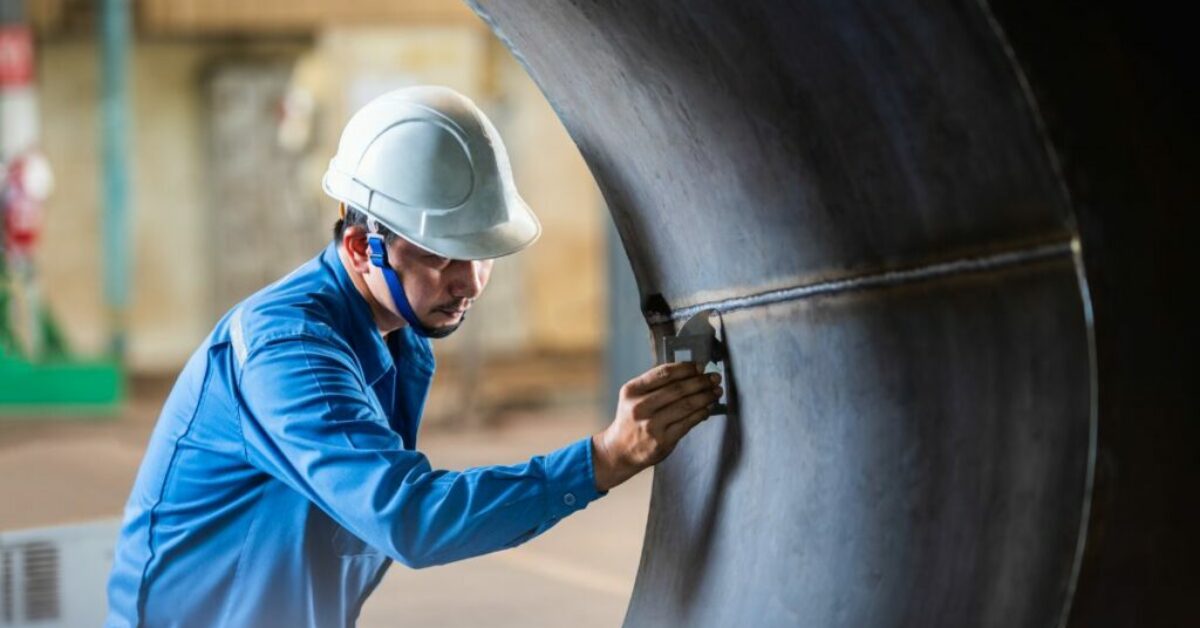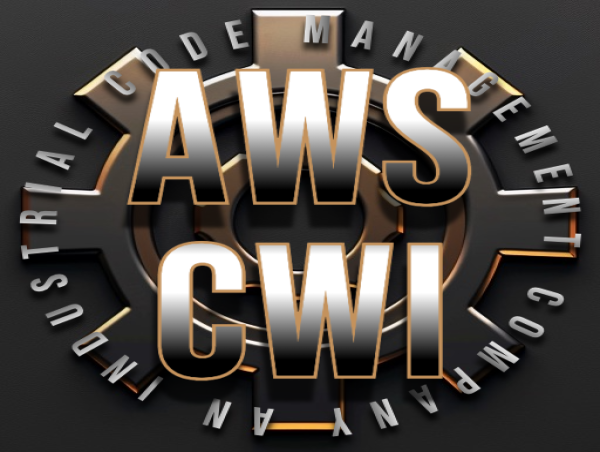The Effect of Welding Inspection Milwaukee on Task Success and Conformity
The Effect of Welding Inspection Milwaukee on Task Success and Conformity
Blog Article

Checking Out the Different Methods and Standards of Welding Evaluation for Achieving Compliance and Reliability in Design Applications
The value of welding assessment in design applications can not be overemphasized, as it works as an important secure for making sure architectural integrity and conformity with industry criteria. Various approaches, consisting of aesthetic examination and advanced non-destructive testing methods, offer important understandings into the quality of welds. Adherence to recognized regulative criteria such as those from AWS and ASME establishes a structure for liability and quality. Nevertheless, the landscape of welding examination is continually developing, motivating a closer exam of arising techniques and their implications for design reliability. What might these growths involve for future jobs?
Value of Welding Examination
Welding assessment plays a critical function in guaranteeing the integrity and safety and security of welded structures. This procedure involves the organized evaluation of welds to verify compliance with fixed criteria and specs. The significance of welding examination can not be overstated, as it acts as a protect versus potential failings that might result from poor welding practices. With extensive examination, flaws such as splits, spaces, and poor blend can be identified early, consequently avoiding tragic failures that might result in structural collapse or safety risks.
Furthermore, welding examination is vital for maintaining quality control throughout the welding process. It makes sure that the welds satisfy the necessary mechanical and physical residential or commercial properties required for their designated applications. Regular examinations additionally promote a culture of responsibility and continual enhancement within welding operations, encouraging adherence to ideal practices and market criteria.
In regulated markets such as aerospace, building, and production, stringent welding inspection methods are mandated to follow legal and safety demands. Eventually, reliable welding inspection not just secures human life and home however likewise improves the durability and reliability of welded structures, making it a crucial facet of design and construction.

Common Welding Evaluation Approaches
A variety of inspection methods are utilized to evaluate the high quality and integrity of welds, each tailored to detect certain kinds of flaws. Among the most usual methods is aesthetic inspection, which involves a complete examination of the weld surface area to identify visible imperfections such as splits, undercuts, and poor blend. This method is usually the initial step in the inspection procedure as a result of its simplicity and cost-effectiveness.
One more extensively made use of method is radiographic assessment, where X-rays or gamma rays penetrate the weld to disclose inner flaws. This technique is particularly efficient for discovering porosity and incorporations within the weld product. Ultrasonic testing uses high-frequency audio waves to determine internal imperfections, offering a thorough evaluation of the weld's honesty.
Furthermore, magnetic fragment inspection is made use of for ferromagnetic products, permitting for the detection of surface area and near-surface flaws by using magnetic areas and observing fragment patterns. Lastly, color penetrant testing includes applying a liquid dye to the weld surface area, revealing splits and other interruptions upon inspection. Each of these approaches plays a crucial role in making sure weld quality and compliance with market standards
Non-Destructive Examining Strategies
Non-destructive screening (NDT) methods are necessary tools in the assessment view website of weld high quality, allowing inspectors to assess the honesty of bonded joints without causing damage to the materials. Different NDT approaches are utilized to determine potential defects, ensuring that welds satisfy the needed requirements for safety and performance.
Among one of the most common techniques is ultrasonic testing (UT), which utilizes high-frequency sound waves to identify inner defects such as gaps or splits. Radiographic screening (RT) uses X-rays or gamma rays to create images of welds, disclosing any suspensions within the material. Magnetic bit screening (MT) is efficient for identifying surface area and near-surface issues in ferromagnetic products via the application of electromagnetic fields and contrasting bits.
Liquid see penetrant testing (PT) is one more extensively utilized approach that involves using a dye to the surface area of the weld, which permeates into any type of cracks, making them visible under ultraviolet light. Each of these techniques gives distinct advantages and restrictions, and the choice of a proper technique is vital to achieving exact analyses of weld stability. Eventually, the application of NDT strategies considerably adds to the dependability and safety of engineering applications.

Regulatory Requirements and Compliance
In the world of welding inspection, adherence to regulatory criteria and compliance is vital to guarantee the safety and dependability of welded frameworks (Welding Inspection Milwaukee). Various companies, including the American Welding Culture (AWS), the American Culture of Mechanical Engineers (ASME), and the International Organization for Standardization (ISO), have established standards that control welding practices and assessment procedures. These criteria supply a structure for quality control, describing the essential certifications for examiners and the techniques for analyzing weld honesty
Compliance with these regulative standards not just enhances the architectural stability of welded assemblies but also mitigates dangers connected with failures, which can have devastating effects. Examinations must be carried out utilizing defined procedures, including aesthetic, ultrasonic, and radiographic techniques, to make sure that welds meet specified criteria.
Additionally, adherence to these criteria is usually called for by law, particularly in sectors such as building and construction, production, and aerospace. Normal audits and certifications are vital to preserve my link compliance, thus fostering a society of safety and security and quality within organizations. Ultimately, governing requirements and compliance act as the backbone of dependable welding assessment practices, ensuring that engineered frameworks satisfy both performance expectations and safety requirements.
Ideal Practices for Welding Evaluation
While maintaining compliance with governing standards is vital, carrying out ideal methods for welding assessment additionally boosts the safety and security and honesty of welded frameworks. Efficient welding assessment starts with comprehensive planning, that includes comprehending the particular demands of each job and guaranteeing inspectors are well-trained in appropriate approaches and standards.
Making use of an extensive evaluation checklist helps to ensure all crucial facets are examined, such as weld size, infiltration, and visual issues. Non-destructive testing (NDT) methods, such as ultrasonic or radiographic screening, ought to be used where suitable, supplying a more in-depth assessment of weld high quality without jeopardizing the honesty of the products.
Documents plays a considerable role in ideal techniques; preserving accurate documents of evaluations, consisting of photographs, examination results, and compliance reports, ensures accountability and helps with future analyses. Additionally, cultivating a culture of open interaction between welders and examiners can cause early identification of prospective problems, advertising immediate corrective actions.
Conclusion
In summary, the implementation of rigorous welding evaluation approaches and adherence to established standards are necessary for making certain compliance and integrity in design applications - Welding Inspection Milwaukee. Techniques such as visual examination, radiographic screening, and ultrasonic screening act as critical devices in recognizing flaws and keeping top quality guarantee. By cultivating a culture of liability and excellence, organizations can boost the stability and longevity of bonded structures, ultimately contributing to the safety and security and efficacy of engineering tasks
Numerous approaches, consisting of visual inspection and advanced non-destructive testing strategies, give necessary insights right into the quality of welds.Welding examination plays a crucial duty in making sure the stability and safety of bonded frameworks.A selection of examination approaches are employed to evaluate the quality and honesty of welds, each customized to identify details kinds of issues.An additional extensively made use of technique is radiographic inspection, where X-rays or gamma rays pass through the weld to disclose internal problems.In the world of welding assessment, adherence to regulative standards and conformity is extremely important to guarantee the safety and integrity of bonded frameworks.
Report this page